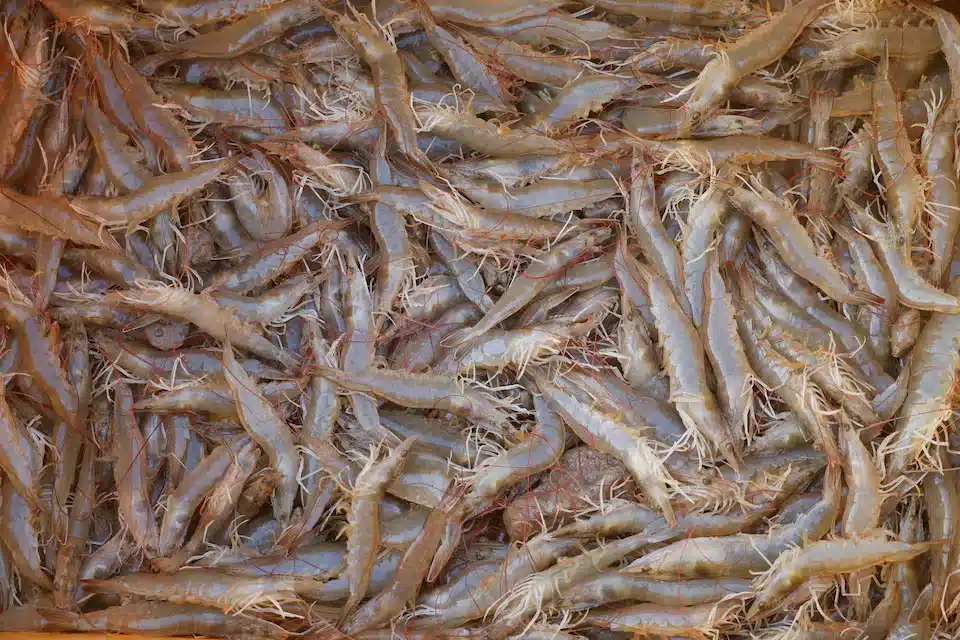Trump Shrimp Tariffs Threaten India’s $7 Billion Seafood Exports: India’s shrimp industry is in crisis after Trump shrimp tariffs raised export costs. The U.S. plans a 26% duty, hurting India’s $7 billion seafood trade. Farmers and exporters fear losses as buyers renegotiate prices.
Meanwhile, Ecuador benefits from lower tariffs. Andhra Pradesh, India’s shrimp hub, faces falling demand. Over 300,000 farmers worry about survival. The tariffs could reshape the global shrimp trade.
Also Read | 3 Key Reasons Behind the Trump Tariff Pause Decision
Trump Shrimp Tariffs Threaten India’s $7 Billion Seafood Exports: Insights
- India’s shrimp exports to the U.S. may drop due to Trump shrimp tariffs.
- Ecuador gains an advantage with a lower 10% tariff.
- Andhra Pradesh farmers face price cuts and unpaid loans.
- Exporters operate on thin margins (3-4%), making tariffs unsustainable.
- Walmart and Kroger may shift suppliers if costs rise.
Background
India is the top shrimp supplier to the U.S. Last year, exports hit $7.3 billion. Andhra Pradesh produces 92% of India’s shrimp. The industry supports 300,000 farmers. However, Trump shrimp tariffs threaten this growth. The U.S. initially imposed a 10% duty, with a 26% hike delayed until July. Ecuador, closer to the U.S., pays lower tariffs, giving it an edge.
Main Event
President Trump’s tariffs have shaken India’s shrimp trade. Exporters fear losses on 2,000 containers already shipped. Buyers are pushing for lower prices. Farmers like S.V.L. Pathi Raju sees demand vanish. “We suffer huge losses,” he says. Many took loans for shrimp feed and land. Now, they struggle to repay.
Exporters operate on slim profits. A 10% tariff eats into their 3-4% margins. “It’s game over if tariffs hit 26%,” one exporter said. Walmart and Costco may switch to cheaper suppliers. Ecuador, with $1.55 billion in exports, could gain. But it lacks India’s production scale.
In Texas, Walmart sells Indian shrimp for $7.92 per pack. The retail giant says supplier ties remain strong. Yet, Indian exporters worry. Frozen shrimp take 40 days to reach U.S. ports. With tariffs, this long journey may no longer be worth it.

Workers harvest fresh shrimp at an aquaculture farm in Andhra Pradesh’s Ganapavaram village, India, April 11, 2025.
Photo Credits: REUTERS.
Implications
- Farmers: Face debt and falling income. Many may quit shrimp farming.
- Exporters: Margins shrink, risking business closures.
- U.S. Buyers: May switch to Ecuador or other cheaper sources.
- Ecuador: Gains market share but can’t replace India’s output yet.
- Global Trade: Shrimp prices may rise, affecting consumers.
Conclusion
India’s shrimp industry is at a crossroads. The Trump shrimp tariffs could force farmers and exporters out of business. Ecuador may benefit, but not immediately. Trade talks with the U.S. will decide India’s fate. If tariffs stay, the industry must find new markets like China. For now, uncertainty looms over Andhra Pradesh’s shrimp farms.


